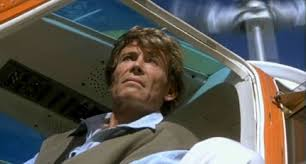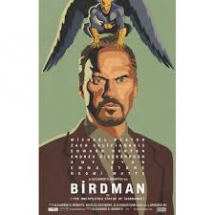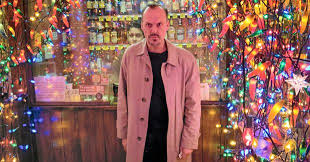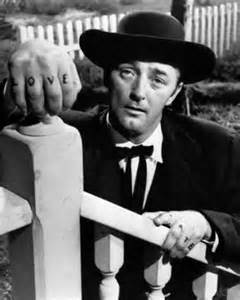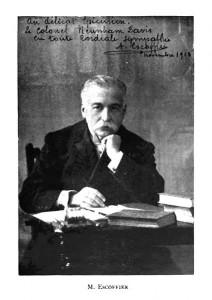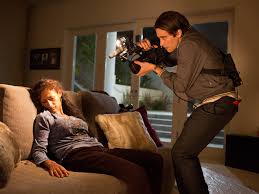The Varnished Culture's Thumbnail Reviews
Regularly added bite-sized reviews about Literature, Art, Music & Film.
Voltaire said the secret of being boring is to say everything.
We do not wish to say everything or see everything; life, though long is too short for that.
We hope you take these little syntheses in the spirit of shared enthusiasm.
The Illusionists 1903

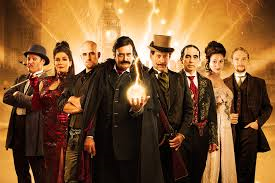
Adelaide Festival Theatre, 15/1/2015
In The Wanderings of a Spiritualist (c. 1921), Sir Arthur Conan Doyle has this to say: “There is an excellent clairvoyante in Paris, Madame Blifaud, and I look forward, at some later date, to a personal proof of her powers, though if it fails I shall not be so absurd as to imagine that that disproves them. The particular case which came immediately under my notice was that of a mother whose son had been killed from an aeroplane, in the war. She had no details of his death.”
On asking Madame B., the latter replied, “Yes, he is here, and gives me a vision of his fall. As a proof that it is really he, he depicts the scene, which was amid songs, flags and music.” As this corresponded with no episode of the war, the mother was discouraged and incredulous. Within a short time, however, she received a message from a young officer who had been with her son when the accident occurred. It was on the Armistice day, at Salonica. The young fellow had flown just above the flags, one of the flags got entangled with his rudder, and the end was disaster. But bands, songs and flags all justified the clairvoyante.“
It is such a mindset of the Edwardian (and Victorian, and Georgian) age to which this band of professional showfolk wishes us to return, when science and technology was the province of the few and people, having stopped believing in God, started believing in anything. In order to shill us into their magic (as opposed to their tricks), every trick in the book is used – a dazzling array of lighting, set, photography, music, misdirection and special effects. If we are not persuaded, we are ultimately grateful for the sheer artistry. Rick Thomas did the vanishing acts and levitation; Jonathan Goodwin lay on a nail and wriggled out of a strait jacket, whilst on fire (homage to Houdini); Jinger Leigh fired a rifle shot that Mark Kalin caught in his mouth; Armando Lucero did some great hocus-pocus with coins and cards; Charlie Frye did some impressive (though not wholely successful) juggling and Thommy Ten and Amelie van Tass did the old ‘what has he got in his pocket?’ routine. Whether you believe in magic or not (and several adults were transfixed along with the kids in the crowd), the technical artifice and entertainment value can’t be faulted, despite the cirque du soleil- and-water script and conceit of the early 20C music hall effect.
Continue Reading →Nights at the Circus

(by Angela Carter)
What a shame. This book seemed like something I would like. It has magic realism, lots of champagne and blizzards. But I didn’t like it at all. I give it two out of five stars. One is for the previously mentioned arbitrary aspects, and the other is for the original ideas and the occasional brilliance. The minus three are for the sheer tedium of it all (plod plod plod), the disconnectedness, the episodic structure and the perpetual showing off. Too much like a creative writing exercise in atmosphere. Endless attempts to shock and surprise. I just didn’t care what happened to anyone and half the time what did happen was coincidental or contrived.
Here is an example of the more heavy-handed passages (sorry it is so long, but that’s not my fault):-
(A poor and overworked baboushka uses bellows to blow on the charcoal under a samovar).
“…those immemorial hands of hers slowly parted and came together again just as slowly, in a hypnotically repeated gesture that was as if she were about to join her hands in prayer.
About to join her hands in prayer. But always, at the very last moment, as if it came to her there was something about the house that must be done first, she would start to part her hands again. Then Martha would turn back into Mary and protest to the Martha within her: what can be more important than praying? Nevertheless, when her hands were once more almost joined, that inner Martha recalled the Mary to the indeed perhaps more important thing, whatever it was ….And so on. Had the bellows been invisible, such would have been the drama of the constantly repeated interruption of the sequence, so that, when the old woman blew on the charcoal with the bellows, it should have been, if a wind had come and whipped away the bellows, a little paradigm of the tension between the flesh and the spirit, although ‘tension’ would have been altogether too energetic a word for it, since her weariness modified the pace of this imaginary indecision to such an extent that, if you did not know her, you would think that she was lazy.
And more than this, her work suggested a kind of infinite incompleteness – that a woman’s work is never done; how the work of all the Marthas, and all the Marys, too, all the work, both temporal and spiritual in this world, and in preparation for the next, will never be over – always some conflicting demand will occur to postpone indefinitely any and every task. So…there was no need to hurry! Which was just as well, because she was…almost…worn out.
All Russia was contained within the thwarted circumscription of her movements; and much of the essence of her abused and withered femaleness. Symbol and woman, or symbolic woman, she crouched before the samovar.
The charcoal grew red, grew black, blackened and reddened to the rhythm of wheezing sighs that might just as well have come from the worn-out lungs of the baboushka as from her bellows. her slow, sombre movements, her sombre, slow speech, were filled with the dignity of the hopeless”.
I almost gave up at this point but, had I have not gone on, I would have missed the rather good later chapter about the clowns’ “dance of disintegration”.
Overall – facile, shallow and glittery.
[Riposte by P: Try “The Bloody Chamber”.]
Continue Reading →The Stunt Man
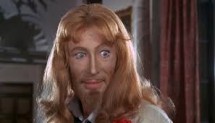
(with a Minority Report and a PS)
(Director R. Rush) (1980)
Tedious, unhinged and thin. Yes, that’s both The Stunt Man and its eyerolling star, the world’s worst actor, Peter O’Toole. Why is Charles Manson blond? Who COULD that old woman in the water be? There’s something about a bridge. O’Toole leers insanely from a helicopter. People’s legs are shot off, or not. Let’s all applaud for no reason. Barbara Hershey wanders about in a Barbara Hershey shaped mist. What the heck is going on? Who could care?
MINORITY REPORT – PETER SAYS:-
Yes, this film has problems. Yes, O’Toole invariably chewed the scenery (although how can you call him the world’s worst actor amid such spoils of choice?) Yes, Barbara Hershey does float about in a ham-smelling miasma of her own. But there are some who do care about this film, which is a mirror to the make-believe of film and film-folk.
Based on the 1970 novel by Paul Brodeur and bearing the scars of the decade Richard Rush took to wrestle it to the screen, the piece suffers from fragmented structure and overly-talky style but the essential story, of a deserter hiding out on a film location, protected by the fey, other-worldy director in consideration for replacing the recently deceased stunt man, stays intact and is highly witty, amusing and intriguing. (When the stunt car goes into the river and the driver fails to surface, O’Toole tells his assistant to “Call my mother – have her convince me it wasn’t my fault.”) But there is no denying the finished film is a little rough and oddly-lit.
O’Toole, as the ‘omnipotent’ Director (in the book called Gottschalk or ‘servant of god’) is probably mad, obviously unscrupulous and obsessed with his latest project, some kind of Great War burlesque. In this context, his performance can be understood and appreciated as rather daring satire, of the kind he did in The Ruling Class and My Favourite Year. There is a varied and interesting cast, although we regret that the hideous Bruno da Fe (the cameraman who makes porno on the side) was left out – the role would have been perfect for Steve Plytas.
So there! We can agree to disagree!
A POSTSCRIPT FROM LESLEY.
I now realise my mistake. As our friend M, who runs a theatre company pointed out sagely, Peter O’Toole is not an actor.
Continue Reading →The Night of the Hunter
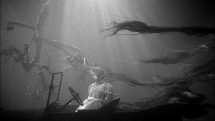
Grimm’s Hansel and Gretel on the Ohio River, as 2 cute kids take to a skiff with stolen cash to escape their brand new stepfather (Robert Mitcham, in a sensational performance as the ‘preacher’ with “love” and “hate” tattooed on his knuckles). Lillian Gish also terrific as his adversary and Shelley Winters again assumes the role of tragic victim in this surreal pasquinade.
Kata Kabanova

A beautiful production of this sad tale of adultery and recrimination, with the set a series of flats that would be at home in The Bill, including an appropriately atrocious print of bison at a waterhole (just to rub in Kabanicha’s horrendousness) and leaf-swept patio – incongruous in the gilded truffle of this particular opera house. Angela Denoke and Jane Henschel, as Kata and mum-in-law respectively, take on the white and black hatted key roles magnificently. Peter Burian conducted.
Continue Reading →Aida
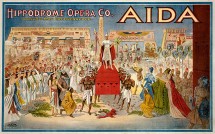
You can’t miss with this one, although it does play a little like a Pharaoh’s Royal Command Performance; numerous parades, for example. This production touched all the staging bases, which it must, and then some, which you’d expect from Graeme Murphy.
Well performed by all, particularly Warwick Fyfe as Amonasro. Jennifer Wilson looked the part more than Margaret Price (who, while singing well, played Aida like a worried little thing in a cafe from ‘Neighbours’ in the 1981 San Francisco filmed production) and the gentleman playing Radames managed to avoid the humiliation of Roberto Alagna at La Scala. Sir Richard Armstrong conducted beautifully.
Continue Reading →Larousse Gastronomique
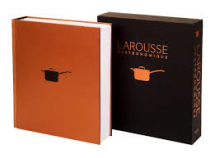
TVC embraces cuisine as a necessary element of culture but has hitherto been rather an ignoramus in the field. Not any more. This Christmas treasure, a gift from good (culinary) friends, was originally devised by Prosper Montagnè, with the first edition in 1938, as a comprehensive guide to matters gastronomic, a serious counterweight to Alexandre Dumas’ Grand Dictionnaire de cuisine.
A skim of the contributors to this (2009 English edition, based on the French, 2007) and earlier versions reveals a pantheon of cordon bleu chefs, restauranteurs, academics, scientists, critics, writers, oenologists, sommeliers, confectioners, etc, etc. From recipes to history to food storage and presentation, if it’s not in Larousse, forget it. Nothing is too minor a detail – for example, I learned that if you serve croque-monsieur with an egg on top, it becomes a croque-madame!
Continue Reading →Disgrace
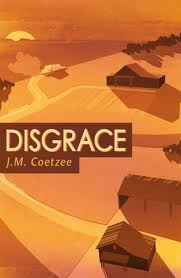
David Lurie, Capetown Professor of Communications (nee Romance Literature)
catches his favourite escort in a domestic moment, causing her to retire for
shame, so he starts a pilot ‘A’s for lays’ scheme that forces him from
campus, pride (in self and deed) stopping him from recanting. This episode
could fill a novel in itself (shades of Kafka or Helen Garner here, as the
University Board of Enquiry into the harassment charge, whilst containing
some members who are Lurie’s allies or at least neutral, reveal, in
time-honoured ivy league fashion, another quasi-judicial body with complete
ignorance of the maxim nemo judex in sua causa). Instead, JMC uses it as a
platform to launch a bigger story, told in classically taut, unclouded,
prose style. This story is that of the irrelevant white minority in South
Africa, marginalized, resented, confined to gated communities or holed up in
farm-lets, mostly armed to the teeth. Lurie’s daughter, Lucy, is not armed
to the teeth – her small landholding is vulnerable, dependent on the
presence and tacit protection of her indigenous neighbour, Petrus. The
disgraced Lurie moves in with Lucy and together they represent the monstrous
legacy of apartheid, as passive collaborators and little blankes, too
trivial for Truth and Reconciliation Commissions, who can just get out of
our cars, out of our country, and out of our way.
James Wood wrote a very perceptive (natch) essay on the book in ‘The
Irresponsible Self: On Laughter and the Novel’ (2004), in which he
correctly observes that Coetzee, as with most writers of genius, knows just as much
what to leave out as to include. Yet Wood complains that too much is left out;
descriptions are over-sparing, such as the objectively inadequate run-down
of Melanie’s tedious boyfriend; too often, Wood memorably complains, Lurie
stands as “merely the voyeur of his own weary clarities.” This did not
bother TVC at all, personally – Lurie is a dinosaur, too damaged and
defeated to adapt, too tired to learn new tricks or discard old ones, too
self-centred to waste time noticing details of those he rejects. Lucy tells
him that “You behave as if everything I do is part of the story of your
life.” This from a daughter to her father! It reflects their different
responses to aspects of the key event of the book, where three nie-blankes
rob and gangbang Lucy, torch and carjack Dad and massacre the housed dogs.
He wants retribution or justice; she wants to deny all, even when she falls
pregnant from the incident. She insists on having the child – she is
prepared to enter into a marriage of convenience and security with Petrus,
who covets her land, even though she understands he is somehow complicit in
the crime. And consistent with our jaundiced view of her new-age, unwashed,
mushily liberal, perversely phallocentric Sapphic world-view, Lucy suggests
that the rape may be the tax she pays, the debt she owes, to stay, an
outrageous and radical musing that shocks and disturbs, even raising doubts
as to her sanity, or confirming her need to think madly to stay sane.
Racism in Africa is a monolithic strategem – whilst the tactics shift. The
dispossessed retake, oppressors are evicted, might making right a constant,
each isolated infamy “another incident in the great campaign of
redistribution” (as Lurie observes when he returns to find his Capetown flat
trashed and looted). But there are degrees of racism, from its ancient
utility to its modern confusion. The exploitation of an Oppenheimer is
arguably benign compared to, say, the ideas of Mr. Terre’Blanche. And it is
here that Coetzee shines in particular: he dares us to box at shadows and
rank amongst the depressingly rich array of brutality, shame, despair,
disgrace in his book. Lurie’s failure to act in loco parentis; his failure
to save Lucy; his indifference to the future; Lucy’s shame as a victim; his
despair at running out of puff, artistically, “as grey and even and
unimportant, in the larger scheme, as a headache”; the stench of defeat
pungent to both dogs and men; the smell of life leaving little lost dogs.
One can easily draw parallels, on different levels, but to assign
priorities? Coetzee instead lets us wallow and ‘enrich’ ourselves and grow
as does his protagonist: infinitesimally, reluctantly, grumpily, painfully,
illogically. The Professor is occasionally brutal in word and thought,
going out of his way to offend, over-thinking things, but he is softened by
events. His operetta, based on Byron in Italy, morphs from a romance of
youthful passion to an elegiac comic howl. He searches out his victimized
student and her family and wrings an apology from himself. In a great
Freudian inversion, he guides dogs to canine heaven and embraces Bev Shaw,
his Angel of Death. He ‘grows’ organically, realistically, while his body
and reputation diminish. That is perhaps the one spark of hope in this
brilliant, deeply bleak and unlovable work of otchayanie (despair)
Nightcrawler
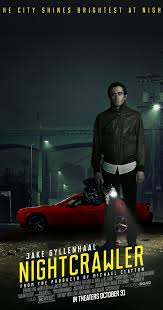
(Dir. Dan Gilroy) (2014)
‘’Nightcrawling” is a term of art for paparazzi who nocturnally trawl the urban underbelly, shooting footage of mayhem for TV news (to be breathlessly shown as an exclusive, after the sanctimonious preliminaries warning “viewer discretion is advised”). Jake Gyllenhaal (see: Donnie Darko) co-produced and stars in this intriguing film as Lou Bloom, a cross between Travis Bickle, Rupert Pupkin and Carl Kolchak, surely selector’s choice for Creep/Worst Employer of the Year. To paraphrase Harold in The Boys in the Band, Lou doesn’t have charm; he has counter-charm.
With no back story as such, Lou is clearly a sociopath, and rather naive, considering. Yet he triumphs through being bright, following his business plan, discarding middle class morality and exploiting anyone and everyone. The film does not pretend to focus on crime and criminals other than through the narrow lens of popular culture, and in this limited optic it succeeds.
From small corruptions (moving fridge photos in a victim’s kitchen), Lou moves up the greasy pole through major obstructions and perversions of justice, his success made believable by Gyllenhaal’s terrific grinning, swivel-eyed-loon malefactor. Also note: Rene Russo, cast again as the ‘strong older woman’, impressive as the TV exec. who realises the glass ceiling needs constant hammering, even if it means spending time with Mr. Wrong; an unrecognizable Bill Paxton as a cynical competitor and Riz Ahmed, playing Lou’s sad-sap outworker wannabe.
It might strike one as easy to demonize the voyeurism of modern culture but it is there, it flourishes and in a land of free speech, debased mores, diminishing conventions and relativist ethics, who’s to stop it? As Lou Blooms rise and rise, that question becomes not only urgent but more important.
Continue Reading →
